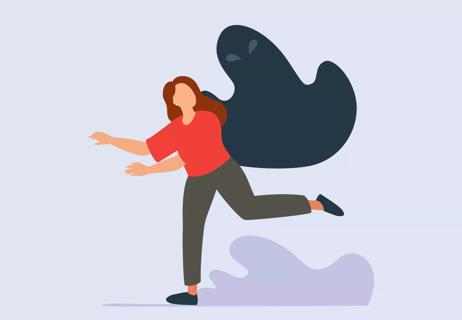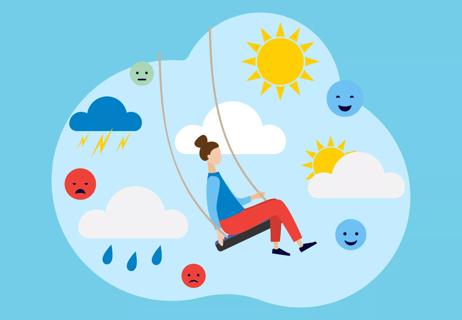The mental health disorder includes a spectrum of conditions

Schizophrenia is a mental health disorder that disturbs your thinking and perception. This affects your interactions with the world.
Advertisement
Cleveland Clinic is a non-profit academic medical center. Advertising on our site helps support our mission. We do not endorse non-Cleveland Clinic products or services. Policy
Schizophrenia not only refers to a single condition, but also a spectrum of conditions that involve psychotic symptoms like:
It can be a long road to diagnosis, however. People — and families — are often in denial. After all, it’s a tough diagnosis to accept.
Psychiatrists may not see all of the symptoms of a person’s schizophrenia right away. And substance use may further cloud the diagnostic picture.
“Given the potential negative consequences of an incorrect schizophrenia diagnosis, we like to be as certain as possible before labeling a psychotic condition schizophrenia,” says psychiatrist Brian Barnett, MD.
Dr. Barnett explains what conditions are on the spectrum and how schizophrenia is diagnosed.
Schizophrenia looks different from one person to the next, as symptoms can vary in both content and their prominence. But here are the disorders included on the spectrum:
About 2.77 million people each year are diagnosed with schizophrenia worldwide. Schizophrenia can have severe effects on your physical and mental health, disrupting your professional, social and romantic relationships.
Advertisement
Schizophrenia typically occurs in stages, each having their own symptoms and behaviors.
Depending on your stage, you may experience anxiety, lose motivation and neglect your personal hygiene. You may notice a change in your emotional state and how you relate to others, as well as issues with attention and memory.
You may become disconnected from reality and have delusions and hallucinations. You might also experience decreased, increased or unusual movements, which can be a syndrome commonly associated with schizophrenia called catatonia.
“While the delusions and hallucinations in schizophrenia often draw the most attention, the impairments in thinking related to attention, memory and ability to plan also make it difficult for those with schizophrenia to hold down a job and manage their own affairs,” explains Dr. Barnett.
Those who have schizotypal personality disorder may be described as strange or eccentric and they often have magical beliefs or strong superstitions. They may exhibit odd behaviors, have few friends and become anxious in social situations.
Unlike schizophrenia, those with schizotypal personality disorder tend not to have delusions or hallucinations.
If you have delusional disorder, you have trouble telling what’s real from what’s imagined.
People with delusional disorder often experience non-bizarre delusions. Non-bizarre delusions involve situations that could possibly occur in real life like being followed by someone. But for those with delusional disorder, these situations are either untrue or exaggerated.
When it comes to socializing, those with delusional disorder tend to function well and don’t exhibit odd behavior. Many times, if the object of their delusion isn’t brought up in conversation, they might exhibit no signs of being delusional at all.
Brief psychotic disorder is a sudden onset of symptoms like hallucinations, delusions, disorganized thinking, unusual behavior and confusion that occur for a short time.
This disorder is rare, but those with antisocial personality disorder or paranoid personality disorder are more likely to experience a brief psychotic disorder. It’s often brought about by an extreme stressor like the death of a loved one or other trauma.
This disorder is very similar to schizophrenia. However, while schizophrenia is diagnosed if symptoms last longer than six months, schizophreniform disorder is diagnosed when psychotic symptoms occur for less than six months.
Schizophreniform disorder can affect the ways you think, act, express emotions, perceive reality and relate to others.
Advertisement
In addition to symptoms like delusions and hallucinations, you may also experience fatigue, a lack of interest in life and poor hygiene habits.
Those with schizoaffective disorder have delusional thinking and other symptoms of schizophrenia.
“They also present with mood disorder episodes like depression, mania and/or hypomania,” says Dr. Barnett. “While individuals with major depressive disorder or bipolar disorder can experience psychotic symptoms during a mood episode, what makes schizoaffective disorder unique is that they also have psychosis outside of mood episodes.”
A person with schizoaffective disorder may find it challenging to function at work or school. Their relationships can also become strained.
And they may experience symptoms during periodic episodes but then have those symptoms disappear for a time.
About one-third of people with schizophrenia don’t believe anything is wrong with them. Many more don’t seek help on their own, for cultural reasons or because they lack resources.
So, problems often come to light only when their erratic behavior or other troubles trigger a crisis.
“People are often brought to the hospital by family, paramedics or the police,” says Dr. Barnett. “Without such intervention, many of these individuals would not receive care.”
Advertisement
To decide whether to admit someone to the hospital, psychiatrists consider the following:
To diagnose someone, a psychiatrist will talk to them and evaluate their behavior. They’ll also consider whether any symptoms were triggered by alcohol or drugs, review any records from prior admissions and talk to the family.
A psychiatrist may also order laboratory tests to rule out nonpsychiatric conditions like lupus, which can cause psychotic symptoms.
“Initially, we may only see that the individual is losing track of reality,” says Dr. Barnett. “Given the number of potential causes of that symptom, we often need time to rule out medical diagnoses and ensure that other psychiatric diagnoses besides schizophrenia aren’t responsible.”
A five- to 10-day hospital stay can usually clarify the type of schizophrenia spectrum disorder.
“But we may not be able to make a precise diagnosis during an inpatient hospitalization, particularly if it’s our first time treating an individual or if there is substance use involved,” explains Dr. Barnett.
Most people with schizophrenia will need lifelong treatment with antipsychotic drugs, counseling and social rehabilitation, says Dr. Barnett.
Advertisement
“This will control their symptoms, reduce the need for psychiatric hospitalization and help them obtain some stability in their lives,” he adds.
Depending on what symptoms someone is experiencing and where they fall on the schizophrenia spectrum, treatments may include:
Despite the potential for side effects, it’s important to keep taking medications prescribed by your healthcare provider.
“When people with psychotic disorders go off their medications, their symptoms frequently return and they often end up back in the hospital,” says Dr. Barnett. “Unfortunately, the more psychotic episodes you have, the harder they can be to treat.”
Without ongoing care, people with schizophrenia can be hospitalized multiple times, lose their jobs and housing, and fall out of touch with their families.
“Early treatment is vital to ensuring those with psychotic disorders remain as functional as possible,” says Dr. Barnett. “Sometimes, it takes multiple attempts to find a medication that is effective without causing side effects, so patience is also important.”
Those with psychotic disorders need to have a clear idea about how to maintain their health by taking their medications, avoiding alcohol and drugs, and accessing community support. This will help them function better in society and maintain their independence.
The road to diagnosis, treatment and stability can be a challenging one. Along the way, Dr. Barnett recommends getting education and support from national organizations like the National Alliance on Mental Illness (NAMI), Recovery International and Emotions Anonymous.
To learn about local services, families should reach out to their county mental health board, local hospital or mental health center.
Learn more about our editorial process.
Advertisement

Fishing for compliments, provoking conflict and pouring on the melodrama are all ways of expressing an unmet need

By setting boundaries around how much you give, you can save your time and resources while also being a good person

Certain B vitamins, omega-3 fatty acids and a healthy diet can serve as complementary treatments for schizophrenia

Following your treatment plan, finding a community, staying active and maintaining a healthy diet can help manage this psychiatric condition

Whether it’s playing hooky or faking cancer, malingering behavior is always motivated by personal gain

Causes range from psychological conditions like PTSD to physical conditions like fibromyalgia

Always putting others’ happiness before your own can build resentment over time

Emotional changes, isolation and unusual behavior could signal the onset of the condition

Start having sex about 72 hours before ovulation, then at least every other day during your fertile window

Attachment theory suggests that your earliest relationships shape connections throughout your life

It isn’t a recognized mental health disorder, but research shows that problematic social media use can negatively affect your mental health, self-esteem and sleep